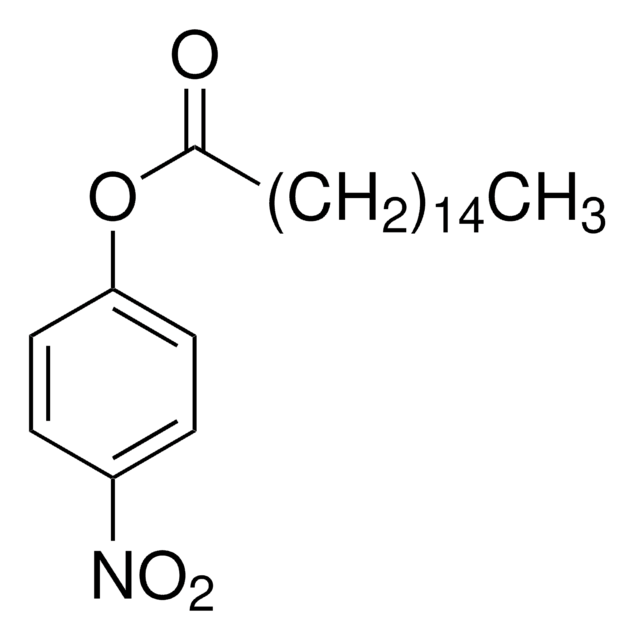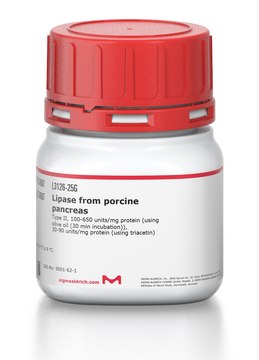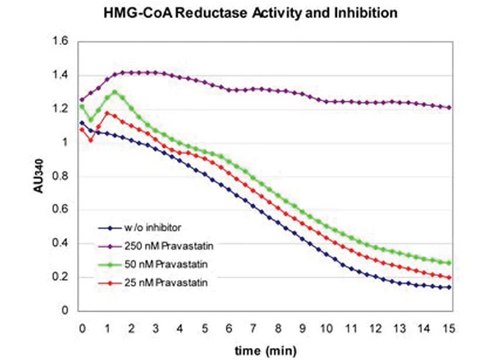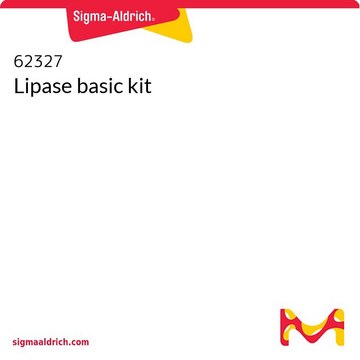MAK046
Lipase Activity Assay Kit
sufficient for 100 colorimetric tests (with glycerol standard)
About This Item
Recommended Products
usage
sufficient for 100 colorimetric tests (with glycerol standard)
detection method
colorimetric
relevant disease(s)
pulmonary disorders; gastrointestinal diseases; cancer
storage temp.
−20°C
General description
Application
Features and Benefits
Suitability
Principle
related product
replaced by
Signal Word
Danger
Hazard Statements
Precautionary Statements
Hazard Classifications
Eye Dam. 1 - Resp. Sens. 1 - Skin Irrit. 2 - Skin Sens. 1 - STOT SE 3
Target Organs
Respiratory system
Storage Class Code
10 - Combustible liquids
Flash Point(F)
188.6 °F - closed cup
Flash Point(C)
87 °C - closed cup
Regulatory Information
Choose from one of the most recent versions:
Certificates of Analysis (COA)
Don't see the Right Version?
If you require a particular version, you can look up a specific certificate by the Lot or Batch number.
Already Own This Product?
Find documentation for the products that you have recently purchased in the Document Library.
Which document(s) contains shelf-life or expiration date information for a given product?
If available for a given product, the recommended re-test date or the expiration date can be found on the Certificate of Analysis.
How do I get lot-specific information or a Certificate of Analysis?
The lot specific COA document can be found by entering the lot number above under the "Documents" section.
How do I find price and availability?
There are several ways to find pricing and availability for our products. Once you log onto our website, you will find the price and availability displayed on the product detail page. You can contact any of our Customer Sales and Service offices to receive a quote. USA customers: 1-800-325-3010 or view local office numbers.
What is the Department of Transportation shipping information for this product?
Transportation information can be found in Section 14 of the product's (M)SDS.To access the shipping information for this material, use the link on the product detail page for the product.
Can these kits be used with serum samples from mouse?
Yes, this kit can be used on mouse serum samples. We generally recommend that fresh serum samples be used. Frozen samples can probably be used. However, the successful use of frozen samples depends on the efficiency of freezing them and the amount of time they have been frozen. If previously frozen serum samples are used, you may want to check the performance of the kit with fresh vs. frozen samples.
My question is not addressed here, how can I contact Technical Service for assistance?
Ask a Scientist here.
Our team of scientists has experience in all areas of research including Life Science, Material Science, Chemical Synthesis, Chromatography, Analytical and many others.
Contact Technical Service








